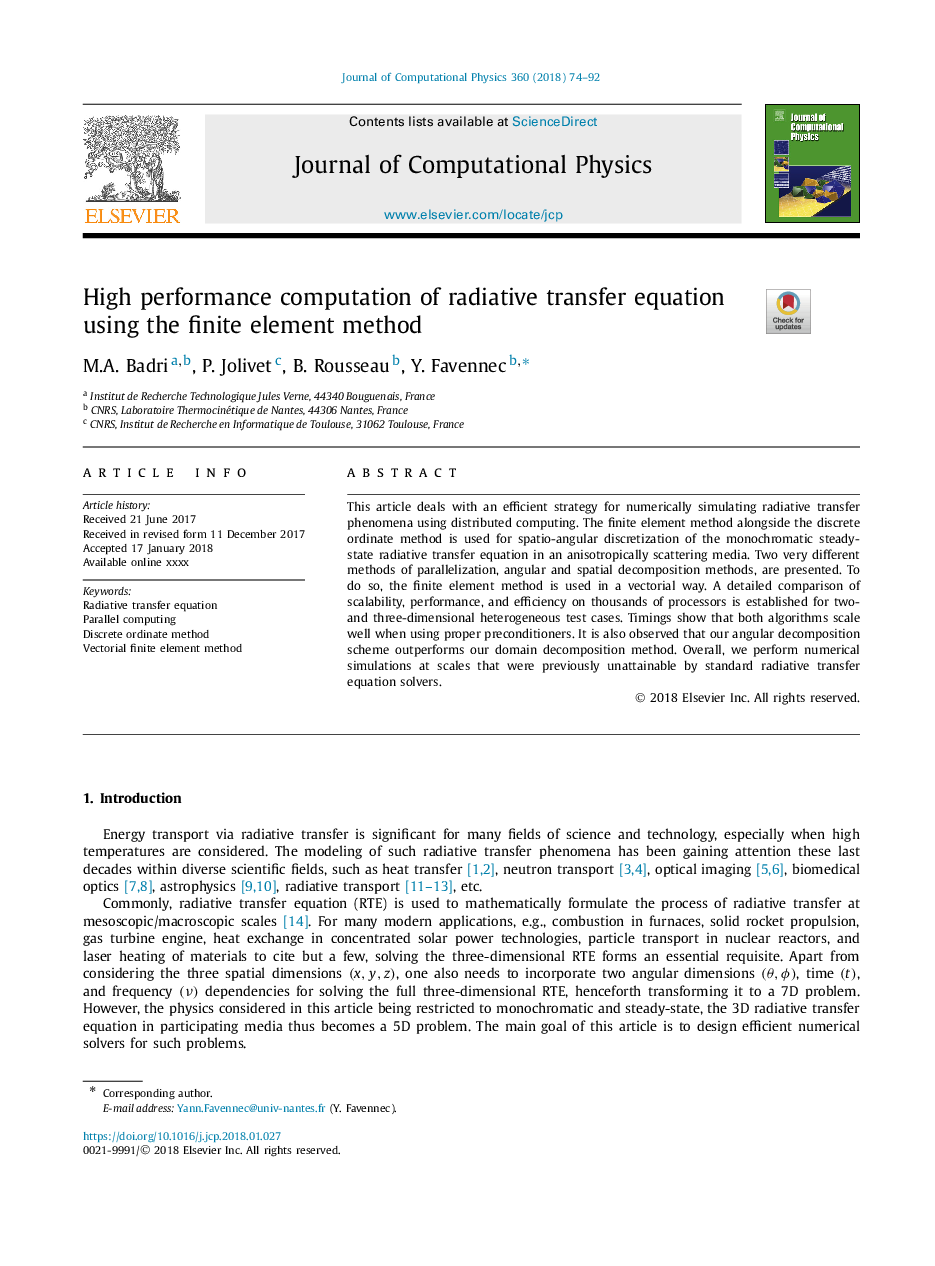| Article ID | Journal | Published Year | Pages | File Type |
|---|---|---|---|---|
| 6929042 | Journal of Computational Physics | 2018 | 19 Pages |
Abstract
This article deals with an efficient strategy for numerically simulating radiative transfer phenomena using distributed computing. The finite element method alongside the discrete ordinate method is used for spatio-angular discretization of the monochromatic steady-state radiative transfer equation in an anisotropically scattering media. Two very different methods of parallelization, angular and spatial decomposition methods, are presented. To do so, the finite element method is used in a vectorial way. A detailed comparison of scalability, performance, and efficiency on thousands of processors is established for two- and three-dimensional heterogeneous test cases. Timings show that both algorithms scale well when using proper preconditioners. It is also observed that our angular decomposition scheme outperforms our domain decomposition method. Overall, we perform numerical simulations at scales that were previously unattainable by standard radiative transfer equation solvers.
Related Topics
Physical Sciences and Engineering
Computer Science
Computer Science Applications
Authors
M.A. Badri, P. Jolivet, B. Rousseau, Y. Favennec,
